Q&A: Retail, Independent Pharmacies Continue to Call for Improved Reimbursement Practices
Rick Gates, chief pharmacy officer at Walgreens and chairman of the National Association of Chain Drug Stores, discussed the current status of retail pharmacies and the way they are reimbursed.
Legislators representing both the federal and state government have continuously advocated for changes in the way pharmacies are reimbursed for clinical services and dispensing medications. However, many attempts have failed as retail and independent pharmacy locations continue to face closures and burnout stemming from pharmacy benefit manager (PBM) reimbursement practices.
“Pharmacists, they're not merchants,” said Rick Gates, chief pharmacy officer at Walgreens and chairman of the board with the National Association of Chain Drug Stores. “Yes, the current model directly ties reimbursement disproportionately to the margin of the drugs being dispensed instead of the health care services and outcomes that they're providing. When PBMs reimburse below the cost to acquire and dispense medications, pharmacists don't receive reimbursement for health care services provided.”
Read through part 1 of our interview with Gates, who put the current retail pharmacy industry in perspective and discussed the immediate financial changes that are necessary for the sustainability of community and retail pharmacy locations.
READ MORE:
Drug Topics: Can you briefly summarize what the current state of retail pharmacy in the US is like?
Rick Gates: Obviously [there’s] a lot going on in the retail pharmacy space right now but probably have to start with the elephant in the room and that's the major news coming out in May when the second largest independent pharmacy declared bankruptcy. It's a sad moment for the industry and a strong indicator that something truly does need to change. Financial pressures are intensifying, pharmacy burnout continues to be a challenge, and access to care is truly a risk when you look at the closures that were just announced.
I'm a pharmacist myself, and I understand this from a personal level, but for those in the professional level, it's really a little bit scary. Pharmacies are closing at an alarming rate, often due to unfair reimbursement practices by a few large, vertically integrated conglomerates. If the industry doesn't really take a close look at making meaningful changes to the pharmacy reimbursement model, patients will need to look elsewhere for health care services. I just want to put a couple things in perspective for you.
Before the May announcement, there was an average of 2 pharmacies closing per day throughout the last year. Pharmacy deserts are increasing due to these closures, leaving about 57.1 million Americans without a pharmacy nearby. And pharmacists are often the only health care provider in some areas, making it critical that they stay open to provide sustainable access to health care services in these communities. It is a big challenge right now and something we have to make sure that we're very mindful of.
Drug Topics: What are some of the key barriers in pharmacy reimbursement that are impeding pharmacy businesses from operating at sustainable capacities?
Rick Gates: There's a lot in here, honestly. There are a few factors that truly contribute to the sustainability of independent, unaffiliated pharmacies. But the largest one is what we're talking about: reimbursement models and the reimbursement pressures that we have. Like other independent pharmacies, Walgreens relies on private and government health plans and their prospective PBMs to appropriately reimburse our costs for dispensing medications to patients in addition to providing clinical services. But when I break it down, there's really 3 barriers that I see as challenges in the reimbursement model.
The first is pharmacy needs to be fairly and reasonably dispensed at what we consider to be a rate floor. I think it's a common misconception that pharmacies make money on all drugs, and in many cases, pharmacies lose money on essential prescriptions, making the model quite honestly unsustainable, especially for independent pharmacies. An example I can give you is, many times we're offered dispensing fees of $1 to dispense medications, an amount that's below what's needed to cover the true costs of dispensing.
The second is patients should be able to go to the pharmacy of their choice, something we call any willing provider. A lot of times these conglomerates, the PBMs, steer patients towards pharmacies in their own network, putting unaffiliated, community pharmacies at a competitive disadvantage and reducing patient choice, which ultimately is what we want to have, that patients can choose a pharmacist of their choice.
The third thing is pharmacies should be reimbursed for the services they provide, not just for dispensing medications. It really comes down to clinical service expansion. I hate to say it but pharmacists, they're not merchants. Yes, the current model directly ties reimbursement disproportionately to the margin of the drugs being dispensed instead of the health care services and outcomes that they're providing. When PBMs reimburse below the cost to acquire and dispense medications, pharmacists don't receive reimbursement for health care services provided.
That's why you're seeing independent pharmacies are facing closures or paring back services or even hours in the communities that they serve. There are a lot of challenges with the reimbursement model, and I think those are the 3 that I think are top of mind.
READ MORE:
Are you ready to elevate your pharmacy practice? Sign up today for our
Newsletter
Pharmacy practice is always changing. Stay ahead of the curve with the Drug Topics newsletter and get the latest drug information, industry trends, and patient care tips.












































































































































